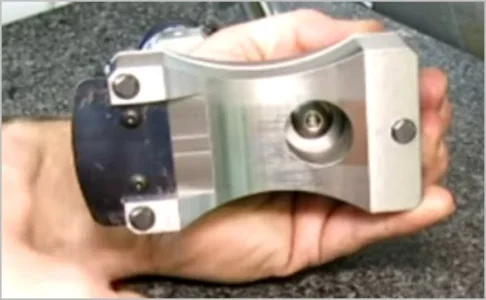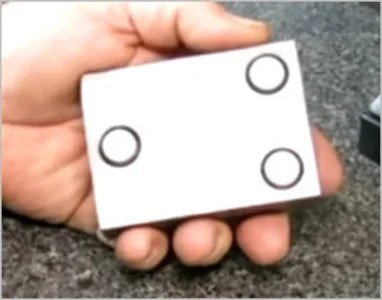I don't know squat about this subject but I did do a bit of curiosity based research simply because it is my nature to challenge assumptions, but also because I have a granite surface plate that I really don't know much about.
According to what I found, granite is the hardest natural mineral (gems aside), and black and pink granite are the hardest of the granites coming in at 7+ on the mohs scale and 88 - 90 on the Rockwell scale. Pink is harder than black because it has higher quartz content. Just because something is hard though, doesn't mean it has high wear resistance. It's molecular bonding and fracture/chip resistance are also important factors. I couldn't find ratings for that and nothing was mentioned on the surface plate manufacturers websites.
For me, one of the other interesting aspects of this discussion was around its central theme - the flattened ball bearing idea. I think instinctively, we all know that point loads are harder on things than distributed loads. It's the very definition of psi after all. The formula for the force of friction is f=uN. In our case, u is the coefficient of Kinetic friction, and N is the objects Weight. The area doesn't factor in. On the other hand, Abrasive wear occurs as a result of the abrasion that happens when a hard and rough surface of one object slides across the surface of another object that is significantly softer. In this case, the higher psi associated with a smaller contact area for a given weight does matter. But nothing in my tribology sources and nothing I could find on the web provided any science or formulas for this wearing process. I was left to use only instinct and experience to guide me. In the end, my guts tell me that a big surface is better than a small one for a given material, and that for a given weight, a big softer steel surface will be better than a small harder steel surface when one is looking to protect THE GRANITE. This is somewhat contrary to what most others seem to think both here and elsewhere so I have to question my judgement. In general, I think we all instinctively like smaller harder wear surfaces like a flattened ball bearing. But I think that is because we are normally thinking about protecting the ball bearing surface from wear in order to achieve better measuring consistency, not protecting the surface it slides on.
I've read many times on here about the importance of cleaning a granite plate. This became abundently clear while researching granite plate wear. The suppliers, universally advocate covering the plate and keeping it clean. Air-borne abrasive dust was recognized everywhere I looked as the main culprit for wear on surface plates. Of course, I have a surface grinder now....... I do keep my plate covered with a sheet of hard plastic. But I have never cleaned it before or after use. So that habit will have to change effective immediately.
As far as minimizing surface plate wear goes, I think my preference is for a big flat surface (the bigger the better for a given weight) over the flattened Ball Bearings. But in terms of making a consistently reliable flat surface for the purpose of making consistent repeatable measurements, I think I'd prefer to go with 3 softer steel bars inserted like posts into the base and then ground flat to produce repeatable consistent measurements for a given measurement session.
A decision is what you have to make when you don't have enough information to make the answer obvious. If I were doing this, I'd shoot for a big flat surface first. If and only if I couldn't achieve that, I'd switch to inserted steel bars ground flat - not hard ball bearings ground flat.
Basically, for any given series of measurements on a given job, ALL of any wear no matter what approach is taken will be insignificant. But I'd like to maintain my surface plate as long as possible. I can always recondition my steel posts, but reconditioning my granite surface plate will probably involve replacing it, not resurfacing it.
I would change my mind in a heart beat in the presence of better tribology info.




